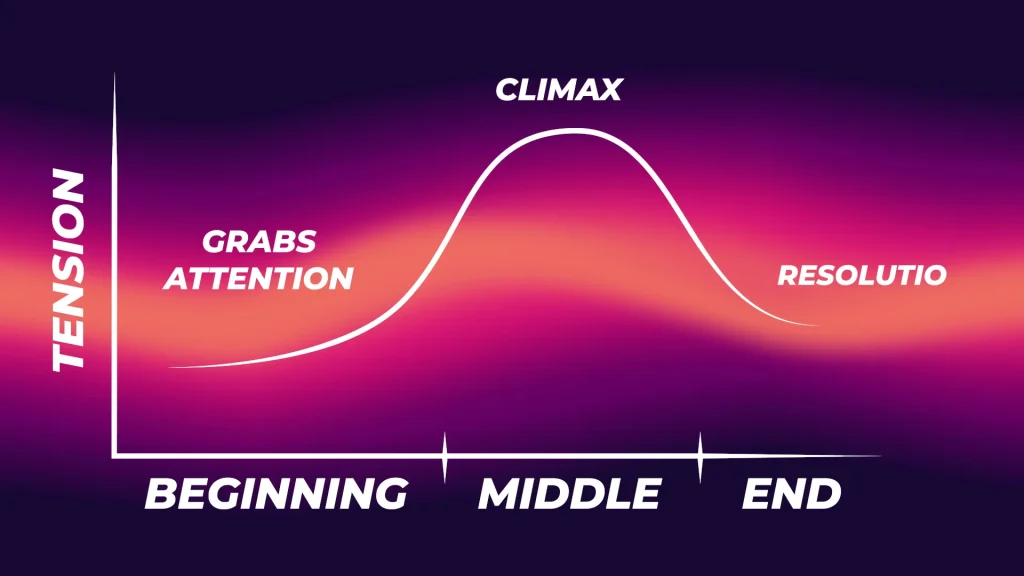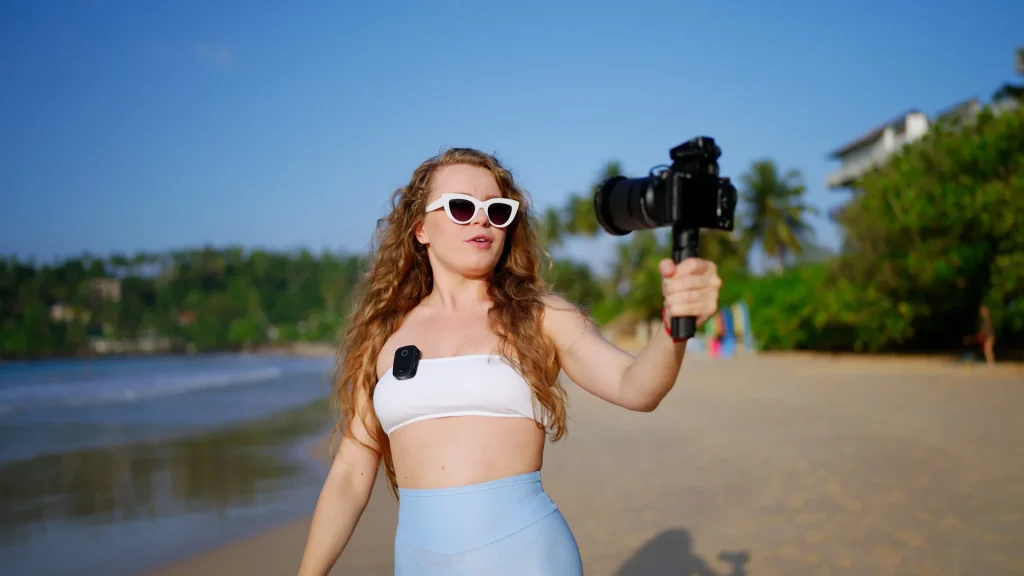Top-level editors think differently. Discover 3 key mindsets that will help you elevate your editing skills and stand out in the industry.
Have you ever wondered what a top-level video editor thinks about while working on their projects? What are the things running through their minds that set them apart from the rest?
In this blog post, I’m going to share 3 key principles that will help you think like a professional editor and advance in this industry.
1. Editing To Create A Narrative Arc

Let me share a short story. Imagine a man who wakes up in the morning, spends the whole day chasing his dreams, and achieves success by nightfall.
Sounds simple, right?
But if you had to turn this into a video, how would you do it? Would you just randomly stitch video clips together? No. It needs a structure – a beginning, struggles/tension in the middle, and an impactful ending.
This structure is what we call a Narrative Arc. It’s about taking your viewers on an emotional journey.
No matter how short your video is, it needs to tell a story:
- A beginning to grab attention.
- A middle to show struggles, tension, or a climax.
- An end that resolves the story or delivers an emotional payoff.
This arc isn’t just for entertainment; it’s crucial because our brains process information better when it’s presented in story form. A well-structured video helps your audience connect with your content, improves retention, and ultimately boosts the success of your videos.
Pro Tip: Before you start editing, think about the Narrative Arc. Sketch it out on paper, marking the different parts of your video. This will give you a clear structure, making your video not just watchable but also memorable.
2. Mastering The Art of Visual Consistency

Compare the work of a beginner editor with that of a professional, and you’ll notice one key difference: Continuity and Consistency. Whether it’s colors, lighting, framing, or transitions, professionals ensure everything flows seamlessly.
Why is this important? Because visual inconsistencies distract viewers, harming retention – something crucial for your video’s success.
To make your videos visually consistent like a pro, focus on these three elements:
Color Grading
Make sure your video’s colors are consistent throughout. This doesn’t mean using the same color tone everywhere but choosing tones that match the scene’s emotional intensity.
Using LUTs can help achieve this. If you’re unsure about LUTs, then check out this blog post – The Beginner’s Guide To Understanding LUTs
Personally, I use a custom color grading preset in Premiere Pro for all my YouTube videos to maintain consistency.
Lighting
While cinematographers are responsible for lighting, mistakes happen. This is where the video editor steps in. A professional editor analyzes each shot carefully and uses color correction to balance exposure and shadows when needed.
If you’re a Premiere Pro user, the Lumetri Panel’s Color Wheels and Match feature can help balance multiple shots easily.
Framing
Proper shot framing is crucial for maintaining continuity. For instance, if I’m talking to you in a video, I’d want to maintain eye contact. A random zoom or frame adjustment without purpose could distract you.
Professional editors ensure that every cut, zoom, or effect has a reason behind it, executed subtly to keep the viewer’s attention intact.
Takeaway: Visual consistency isn’t just about aesthetics; it’s a psychological tool that immerses viewers in your video.
3. Adapting To Different Content Types

Every type of content has a unique purpose.
- A vlog aims to build a personal connection with viewers.
- A commercial is designed to sell a product or service.
- A movie’s goal is to entertain.
To become a top-level editor, you need to adapt your editing style to match the content type. Sticking to one style across all genres won’t help you develop the broad skills needed to thrive in this fast-paced industry.
Consume as much diverse content as possible – watch different types of YouTube videos, commercials, and movies. Don’t just watch; analyze them. Pay attention to their editing styles, cuts, music, colors, and transitions.
A professional editor’s mindset is never limited. They’re always ready to adapt and refine their skills from project to project.
Conclusion
If you implement these 3 principles in your editing process, you’ll evolve into more than just a great editor – you’ll become a storyteller, a designer, and a content strategist.
Learning editing tools and techniques is important, but what’s even more important is developing the mindset of a professional. This mindset is what truly sets a top-level editor apart from an average one.
With that said, I hope this post inspires you to think differently about your editing process. Let me know your thoughts in the comments, and don’t forget to share this post with others who might find it helpful!

